The first time a reader asked me about half calorie rice, I’d never heard of it before.
But so many of you have been emailing or leaving comments asking for my thoughts on the half calorie rice trend that I figured it was best to just write a post on it.
(Because I know someone is going to ask… For more on why I make low-calorie recipes even though I’m not counting calories, be sure to read my Katie FAQ Page.)
What Is Half Calorie Rice?
Basically, researchers discovered that if you add a teaspoon of oil when cooking rice, it actually decreases the calories.
A study from the College of Chemical Sciences in Colombo, Sri Lanka found that cooking rice with oil and then letting it sit for 12 hours increased its resistant starch and lowered its calorie count by as much as 60 percent.
The indigestible starch formed during the cooling process prevents some of the rice from being metabolized into glucose during digestion. And reheating won’t increase the calories again, so after letting the rice cool overnight you can season it and reheat as desired.
Why Half Calorie Rice?
Hopefully, if you are a regular reader of my blog, you know I believe in the importance of a balanced diet and am not a fan of weight-loss gimmicks.
Unless your diet is made up entirely of rice—and I do know some people who wouldn’t mind this (Hi, Dad!)—saving calories on just one item might not really change much for you. But the results of the study have possibly bigger implications that could help fight the obesity epidemic around the world in the future.
For example, is there a way to increase the resistant starch in other foods, such as pasta or bread? And personally, the main reason I was intrigued by this study was because it completely contradicts the media’s message that added fat is the enemy. (You probably know, because I talk about it all the time here on the blog, that I am a big proponent of including fat in one’s diet and that my own daily diet has a higher-than-normal amount of added fat.)
If you haven’t seen it yet, here’s a sample of What I Eat In A Day.
So I was thrilled to see scientific evidence backing yet another possible benefit of including a little healthy fat during cooking, and I couldn’t give up the opportunity to share this information, because I know so many readers of my blog are afraid of using any fat at all, thanks to being bombarded with negative messages all over the media.
(FYI, Adding a little fat to vegetables such as tomatoes or kale has also been proven to help one’s body absorb more of the nutrients in the vegetables, because carotenoids are fat-soluble… Seriously, food science is fascinating.)
On an entirely unrelated note, I was shocked at how soft and fluffy the rice turned out with this particular cooking method. Even if you are not counting calories, you might never go back to cooking your rice any other way.
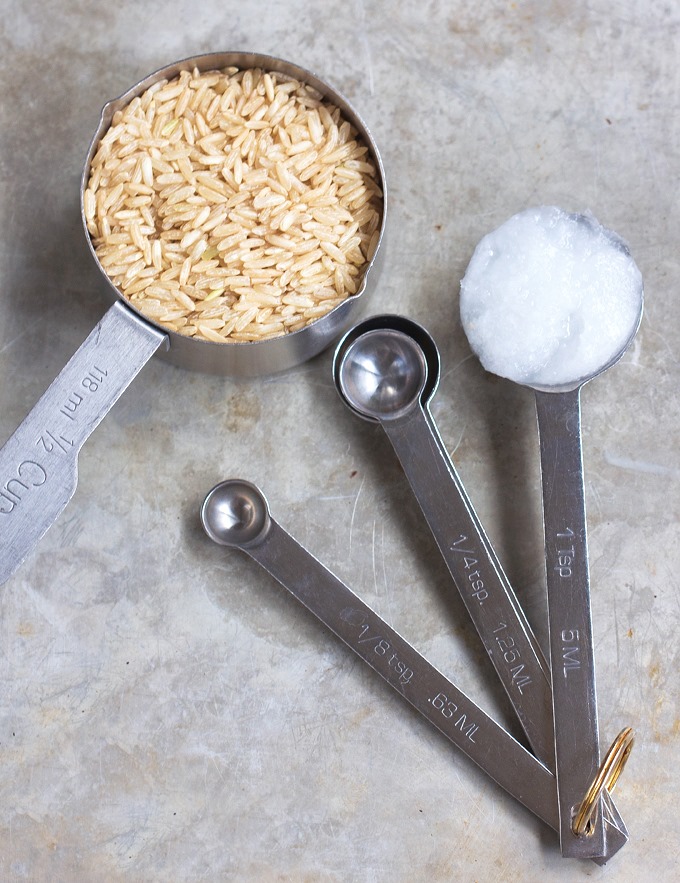

Questions & Answers
Does the same idea work for other grains, such as quinoa or oats?
You can definitely use a different grain instead of the rice. Quinoa and barley both cook up nice and fluffy using this method.
I’d guess the lower-calorie property would still apply, but because I’m not a scientist and couldn’t find any sources mentioning testing a different grain, I can’t say that for sure.
Does it work with other oils instead of coconut oil?
Same answer as the above. Using a different oil or a buttery spread will still yield the same delicious results, taste-wise.
Doesn’t adding oil add calories?
The change in starch cancels out more calories than are added in from the oil.
Is it really half the calories?
The studies found that this cooking method reduces the number of calories by 10 to 12 percent in high starch rices and has the potential to reduce the calories further in lower starch rice, up to 60 percent, depending on the type of rice used. (They currently have not tested every type of rice, so this is an estimate.)
Wait!!! Does this mean I can eat twice the amount of rice???!
Okay, this last question wasn’t from a reader. It was from my dad when I told him about the study, because he loves rice more than anyone else I’ve ever met.
So to answer the question… No, Dad, no more rice! 😂

Half Calorie Rice – Is It For Real?
Ingredients
- 1 2/3 cup water
- 1 tsp coconut oil
- 1/2 cup uncooked rice (80g)
Instructions
- Cooking times are based on long or short grain brown rice. In a small pot, bring the water to a boil. Once boiling, lower to a simmer and add the oil. Then throw in the rice and cover the pot. Leave covered on simmer for 40 minutes without ever lifting the lid. Then—still never lifting the lid—turn off the heat but let the rice sit covered for an additional 20 minutes. Still not opening the lid (yes, seriously… don’t lift the lid even to check on it), place the pot in the fridge for at least 12 hours. The next day you should have beautifully fluffy rice that is apparently lower-calorie… but, more importantly, that tastes delicious!! You can add a little salt and any seasonings you wish, and you can reheat the rice if desired.
Notes
Have you made this recipe?
Tag @chocolatecoveredkatie on Instagram
Ways To Use Half Calorie Rice:
1. Serve with my favorite Sticky Sesame Cauliflower
2. Or this recipe for Crispy Lemon Cauliflower
3. Make Cheesy Rice & Broccoli, from the Hello Breakfast ebook
Links / Sources:
- The original press release: https://www.acs.org/content/acs/en/pressroom/newsreleases/2015/march/new-low-calorie-rice-could-help-cut-rising-obesity-rates.html
- An article from NPR that discusses how cooking vegetables with a little fat can help one absorb more nutrients: http://www.npr.org/templates/story/story.php?storyId=106968683
- A write-up in the Huffington Post about the half calorie rice: http://www.huffingtonpost.ca/2015/03/23/how-to-cook-rice_n_6923676.html
- A write-up from The Kitchn about the half calorie rice: http://www.thekitchn.com/cut-calories-in-rice-with-this-surprising-method-227215
- An article in the Washington Post about the global impact it could have: https://www.washingtonpost.com/news/wonk/wp/2015/03/25/scientists-have-figured-out-a-simple-way-to-cook-rice-that-dramatically-cuts-the-calories/
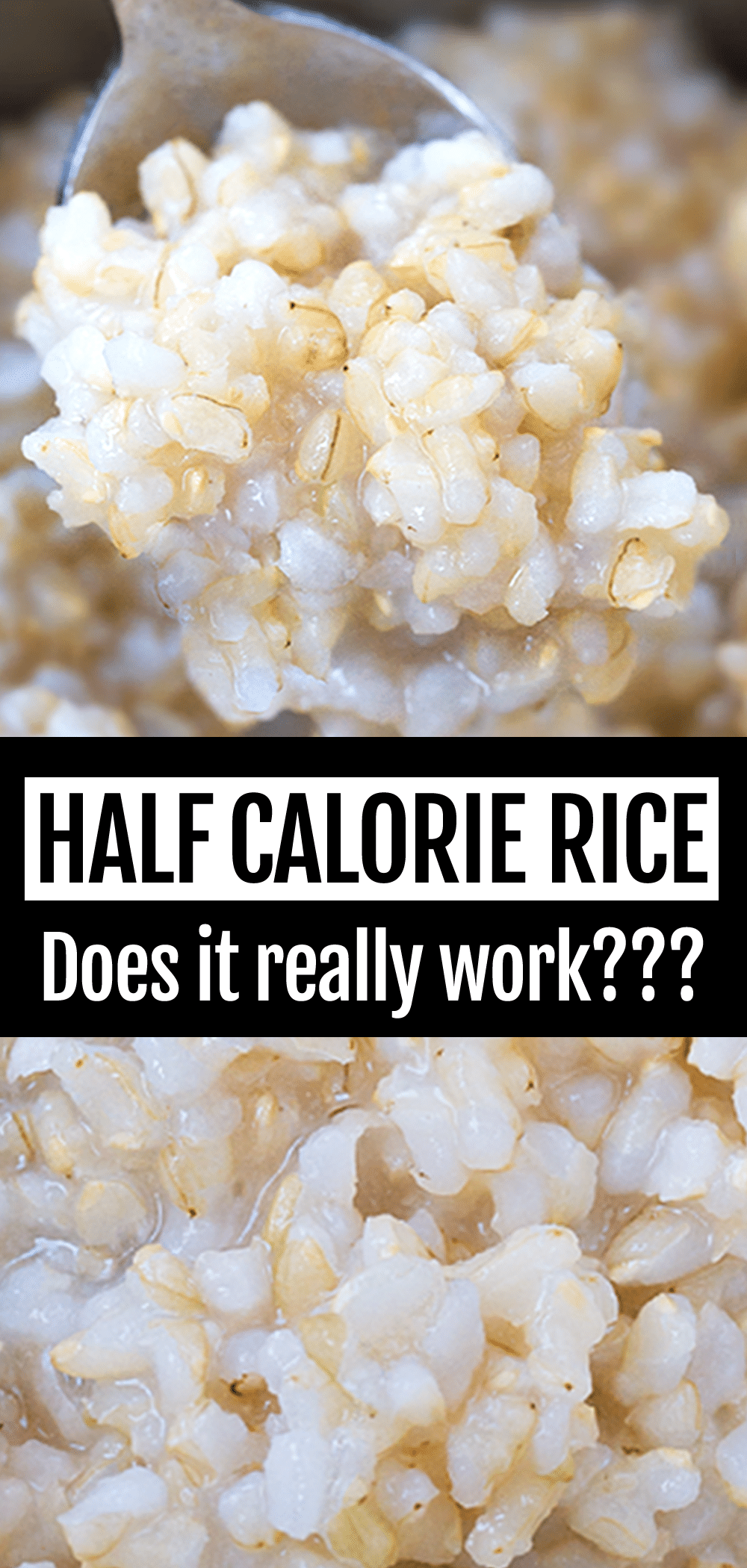


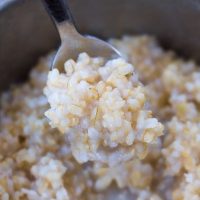
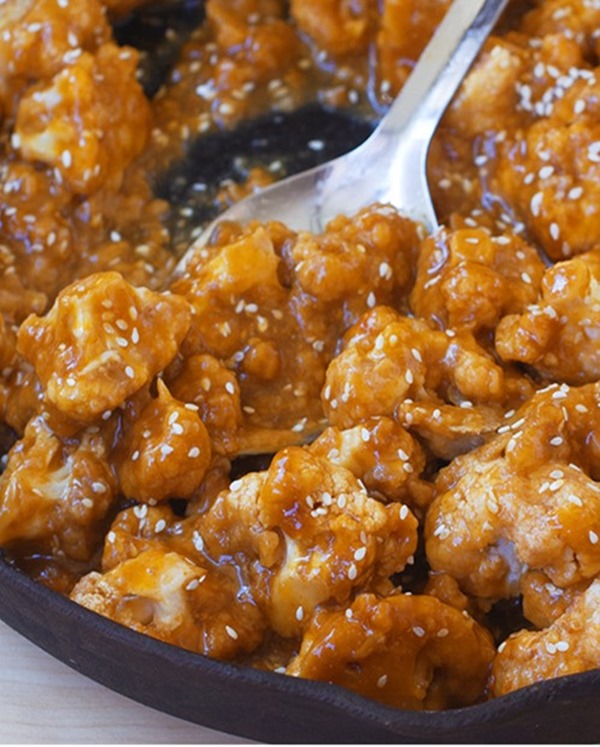

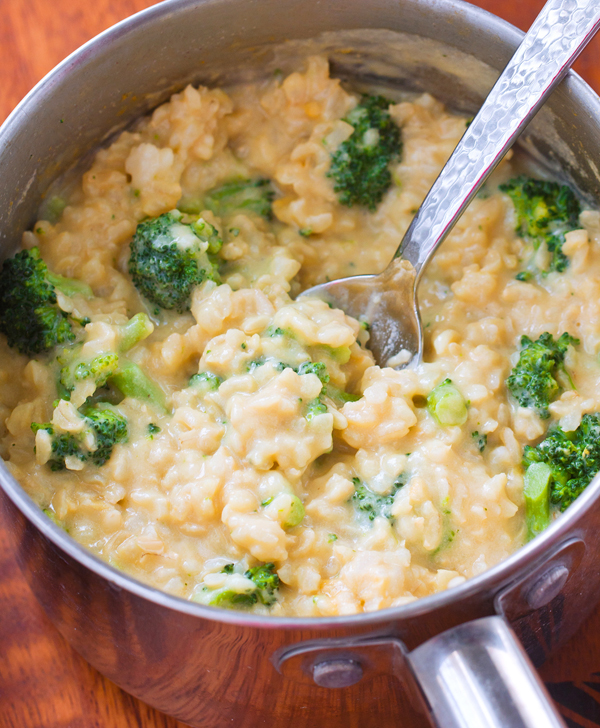

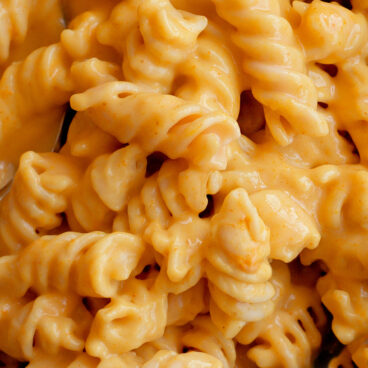
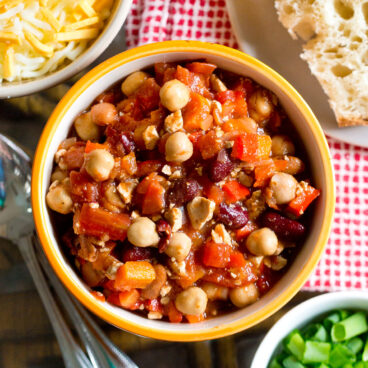
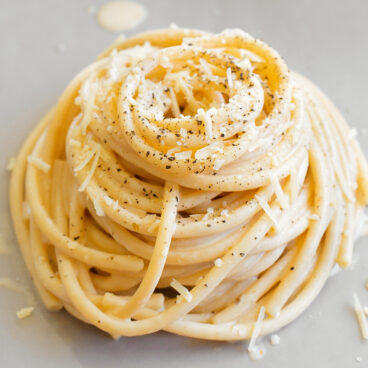

Cynthia says
I use a rice cooker for my rice, a set it and forget it way to cook rice. Would I put the entire rice cooker in the fridge? (When I moved to my current town, ALL the stoves are electric and I had spent my entire life cooking on gas. I was never able to figure out how to make rice on the electric stove, so I switched to a rice cooker and never looked back.)
Jason Sanford says
Sorry not sure because (to my knowledge) it hasn’t been studied that way yet. If I were doing it, I would just portion it into a container as I’m sure you already do. But I can’t speak for how a rice cooker method would affect calories.
Jason (media relations)
liz says
I always cook rice with oil, salt and crusehd garlic (for savory dishes of course) but the method differs from yours and actually the results are amazing.
first I add the oil (anykind you want to use) then the garlic and salt (if I don’t add it now I totally forget to do it later) when the garlic is somewhat cooked I add the rice and let it cook for a few, as soon as it looks translucent I add the water and cover to boil and then simmer until the water is absorved. Voilà the best rice ever, please try and let me know!!!!
Jason Sanford says
That sounds amazing with the garlic! We will try it for sure!
Corina says
Nice post! I love food science! Thanks a lot for sharing. Would love to see more of these posts… 😉
Barbara says
I want to try this method but wondering how this cooking method affects the glycemic index if you have diabetes.
Jason Sanford says
We found sources that said it would lower the glycemic index but didn’t find any that said by how much, and I think it would depend also on the type of rice. I’d recommend to talk with a doctor or nutritionist who might have better insight on diabetes and how this recipe might work on a diabetic-friendly diet.
Jason
Cassie Thuvan Tran says
As a Food Science student myself, I am pretty skeptical about this rice hack lowering the amount of calories by such a drastic amount. I think that everyone metabolizes the same foods SO SO differently that not everyone may reap the caloric decrease! But then again, this probably would give people more incentive to eat MORE rice because it looks delicious! And hey, I would love to try this with another type of oil like sesame or avocado oil!
Joanna says
I have been studying resistant starch for years (on my own) and there are many other foods besides rice that have resistant starch properties like potatoes, green bananas, beans, and pasta. I dont see why this couldnt work on other foods. This is the first I have heard of the oil helping the starch granules during the initial cooking but read the study and found it pretty cool!
Natasha @ Thoughts of Tradition says
Never heard of this hack before. It sounds unrealistic, admittedly. I know little about starch and how it reacts with fat, so I cannot speak on this issue. But I thoroughly enjoyed reading this post. Food science is a heck lot of fun.
And I’m in the same boat as you. Although I did not enjoy, nor feel good, being on a ketogenic diet, I love healthy fats and don’t feel “afraid” of them like some people are. I see so many people avoiding avocadoes, peanut butter, coconut oil, and organic butter, and most of these people I know are overweight. Although it’s way too easy to binge on nut butter for me, therefore I try not to eat it every day.
Thank you for sharing this interesting study with us. I would like to look into this. Have a wonderful weekend.
Infiniti Williams says
I’ve actually been adding butter to my rice for a while lol esp after reading the packaging that says to add some. Buttery rice is yummy. But the concept behind 1/2 calorie rice is very interesting. Never heard of it before. I’m not excited about rice as I use to be once I recently found out about the arsenic in it. I feel like I def need to add more grains and such in my diet and not rely mostly on rice. Anyone’s thoughts on the topic?
Jason Sanford says
Quinoa, barley, millet, oats, so many options! Try a health food store bulk bin!
Kim says
Ok… the oil has lots of calories… that would ADD to the calories. I do know that cooling it down and then eating it either cold or reheated does make it a pre-biotic… and it doesn’t cause the blood sugar spikes for diabetics. I won’t be adding the oil though. Sorry.
Natasha @ Thoughts of Tradition says
Read the post again. Katie clearly states that using this method will change the starch, and the calories will be canceled out.
Ness says
This is amazing! I’ve always added a bit of oil to my rice before cooking because I like how buttery it tastes when it’s done. Had no idea it was actually doing some good! Thanks for posting Katie!
Robin Gerardi says
My question is do I follow the same concept but follow cooking times on the package depending on the rice I use? Example, jasmine rice cooks in 20 minutes
Jason Sanford says
Yes, definitely different types of rice will need a different amount of time.
Elizabeth says
You mentioned that lower starch rices have a higher caloric reduction. Which types of rice are lowest in starch? Is Basmati?
Jason Sanford says
The study stated that it hadn’t tried every type of rice but that it expected brown rice to have a larger reduction than white.
The Curious Frugal says
I have never heard of this before! I always add about a tablespoon of butter to the water while the rice is cooking. I wonder if the 12 hours of cooling is a big part of creating the resistant starches? I don’t do that part and don’t care about low calorie foods but found this interesting anyways!
Barbara says
Actually the cooling is the most important step in this procedure. I am studying nutritional sciences and am aware of the fact that cooling does lead to a change in the type of starch. But I don’t think that one can say with certainty by how much the caloric content is actually reduced. Never heard about that oil thing before. Sounds interesting though. Unfortunately I can’t find the study to take a deeper look.
Jason Sanford says
Sources are linked at the bottom of the post. Here is the link to the original press release. Hope that helps! https://www.acs.org/content/acs/en/pressroom/newsreleases/2015/march/new-low-calorie-rice-could-help-cut-rising-obesity-rates.html
Carissa Nelson says
I’m not a calorie counter, but I do love the science behind this! Plus I could use all the help I can get on making my grains fluffier. Excited to try!
jan says
This idea is explained in the book “The Clever Guts Diet” by Michael Mosley.
It works for other starches, too- like potatoes, pasta, bread.
These days I refrigerate all starches after cooking, and reheat before using. Once you get used to the extra “loop” and the timing, it is very convenient too. So I cook my pasta, quinoa, rice etc after breakfast and it stays in the fridge until I make dinner. Or I make a pasta salad after breakfast and refrigerate it until cold.
Brittany Audra @ Audra's Appetite says
I took food science classes in undergrad for my dietetics degree and never heard of this before! Definitely going to have to look this up and research it now!
Beth says
I cook a large batch of rice or pasta, cool in fridge, divide into portions for two, and freeze. I thaw and reheat before serving. Do you think it would have the same benefits or would freezing change the process?
Jason Sanford says
I don’t think it’s been studied, so unfortunately there’s no way to say!
Kate says
This post concerns me. They only used some types of rice, most of those types are not used here, and the cooking method reduced the calories by 10 to 12 percent. It is *hypothesized* that some rice types could be reduced by 60 percent, not tested. You have no way of knowing that the rice recipe you are giving has a calorie reduction anywhere close to 60 percent. The Washing Post Article you linked does the best job of explaining this. This worries me. What if an avid follower of your blog takes this post to heart and begins eating this rice every day, believing it has 50 or 60 percent fewer calories when it does not? They could gain weight overtime if they do not budget in the extra calories. This could continue to obesity, not help it. There needs to be more research done before you can claim any cooking method on any type of rice reduces calories by 50-60 percent for sure. Please reconsider calling this “half-calorie rice.” “Fluffy” or “buttery rice” would be a better idea.
An article explaining this: https://health.usnews.com/health-news/blogs/eat-run/2015/04/21/does-the-calorie-slashing-method-for-cooking-rice-really-work
Natasha @ Thoughts of Tradition says
Katie didn’t take full responsibility for any of this information. She clearly wrote that she is a not a fan of counting calories, and that the people who conducted the study said that the rices will yield different results.
Anyone who takes this fully to heart is quite silly and should probably not be using a computer. Katie is not at fault here whatsoever.
Ellie says
I was about to say the same thing. She was only reporting on the study that had been done, not making any false or misleading claims about the study. If you read the article in full she mentions the difference in calories and types of rices clearly in the Questions section. Further I agree with the person above me, that if anyone becomes obese because there might be 50 extra calories in the rice they might eat once a day, then they have a problem way beyond this and are eating way too much rice.
Sophie says
It wasn’t even a scientific study though, it was just a project a chemistry student in Sri Lanka did. Not peer reviewed or even published. I think it is a little irresponsible to propagate these kinds of experiments with no disclaimer about their reliability.
Dennis says
This is an unpublished study, and as the article in USNew points out, the methods have not been evaluated by other silentThere are many unanswered questions about this report, enough to say that this method has not been established to be as effective as the claims. First, this was a paper or poster presented at the American Chemical Society’s annual meeting in 2015. My first reaction is, “So what?” The ACS’s own press release states that “10,000 papers will be presented, and nearly 4,000 poster presentations will take place at the meeting. There will also be more than 6,000 oral presentations.” I know from personal experience that the level of scientific rigor one has to demonstrate to get into a meeting of that size with is pretty darn low. As far as I can tell, this paper has never been published in a scientific journal almost three years after the initial presentation. That’s a peculiarly long delay for a finding which was touted to be of such great significance. Third, we don’t know all the sources of funding for this study. There are certainly industries in Sri Lanka who might benefit from such a result, if it were true. It has long been known by industrial sponsors that a study can be designed with enough biases to produce the result you want. All you need to do is get a group who willing to accept your funding and the strings that go with it to carry it out..As a previous comment pointed out, the 50-60% reduction in calories was not actually demonstrated. It was a speculation based upon using a strain of rice which was different from that tested. The actual results in this experiment showed only a 24 to 29 calorie reception per cup of rice. Assuming that was true, and assuming you ate two cups of this rice every day for a year, you could expect to achieve a weight loss of only 6 pounds. I’m afraid Katie has been demonstrating observer bias.
Es says
Thank you for posting this recipe, Katie. It cut down on soaking time and was so simple to follow.
Nat says
Thanks for this post, I’m going to give it a shot. Is there a specific reason why one shouldn’t lift the lid?
Jason Sanford says
Yes it lets out the heat and steam and the rice will not cook the same.
Laura says
So many different posts! The way I cook a FOOL PROOF RICE….,2 1\2 cups water (boiling), 1 1\2 cups brown rice, 2 tbs. salted butter or any oil. Heat oven to 375 Fahrenheit. Pour rice into 8X8 glass baking dish, add your oil them boiling water; stir. Cover with foil and bake 1 hour. Perfect rice right then or cool down and reheat.
Jason Sanford says
That sounds wonderful. I need to try!
Katherine says
For cooking larger portions of rice would you use the same amount of oil or adjust it based on the amount of rice used? Ex: 1 cup of dried rice would be 1 teaspoon of coconut oil or 2 teaspoons?
Alexandra says
What is the reason behind not lifting the lid? I am just worried about my rice drying out and burning the pot before the 40 min is up…
Mwb says
So what is the nutrtion facts of this rice
What's the frequency, Kenneth? says
I spoke, briefly, with Sudhair James, who participated in the research, and from what I can tell, informed the world about so-called coconut oil rice. According to him, it is the MCT in the coconut oil which binds to the starch in the rice. I contacted him because I was interested in using different oils, as coconut oil is far too flavorful for use in some recipes. I discovered this when trying to use the rice I’d cooked with Japanese Gyudon, in which I could barely even taste the beef. I asked Dr. James, point blank, if other oils would work. It was at this time that he told me that MCT seemed to be the key here. He also said that his colleagues are still researching with other substances. As you, he mentioned potatoes and pasta.
The MCT factor leads to exactly ONE other oil, from what I can tell: palm kernel oil. It turns out that so-called MCT oil is from either coconut oil, palm kernel oil, or both. Thus I started looking into MCT oil. There seems to be some debate about the meaning of “fractionated,” whether it is all fractionated, and whether that in fact means that it absorbs into water. My limited knowledge of chemistry leads me to believe this may not be a GOOD thing, as the oil seems more likely to bind to the starch if it remains divorced from the water in which it resides.
I’d be more than interested to hear more from you, Katie, if you feel I’m misinformed or feel that you can further enlighten me. Feel free to email.
I’m just an engineer (manufacturing degree) who writes software, so I only know what I read and have been told.
Lily says
Molecular biologist here. The actual decrease in calories is likely much less than 10% for the average person doing this in his or her kitchen as opposed to the Sri Lanken team of Chem students with a lab and calorimeters at their disposal to use the least amount of oil possible to reach optimal results. It does not actually slash the calories in half. BUT eating previously cooled rice will have indigestible fiber to feed your gut flora and that is a plus even if the calories aren’t significantly less.
Amber says
Really stupid question here… I always cook my rice in chicken broth/stock. Everyone here is saying they cook in water. The article says water. By cooking in chicken broth/stock, does this still cut calories a bit, help gut flora?
Waqas says
Hi, SO amazing to hear this part of your story, Katie! Thank you for sharing ? You’re an inspiration and great role model to all!
PJ says
Katie it would have been better to publish this if you performed a blood glucose test comparison of eating the hot rice and test your blood and next day eat the reheated cold 12-24 hour rice. Why report on something if you’re not going to test it. So, the “Does it Work,” in your article was never addressed and should have been left out verses reporting it as if you had supported documentary research or self testing.
Mary says
Honestly, the rice in the photo looks super mushy and over cooked. Martha Stewart suggests 1.5-1, water to brown rice ratio. I also hear 2-1, water to brown rice, often touted as the correct ratio. This recipe suggests a ratio of 3.33-1, water to rice!!
The excess water doesn’t seem to have anything to do with the science discussed here, so I assume Katie just prefers mushy rice?
I’d love to know if other have tried this recipe with a different ratio (i.e. less water)
Tiffany says
Hi! I was just wondering if this recipe works with any oil. I don’t usually cook with coconut oil, so I was wondering if it would work with other oils like olive or vegetable oils.
CCK Media Team says
It will! We can’t say if the calorie-lowering will do the same thing, because the study was only conducted with coconut oil (that we know of). But taste-wise, it works!